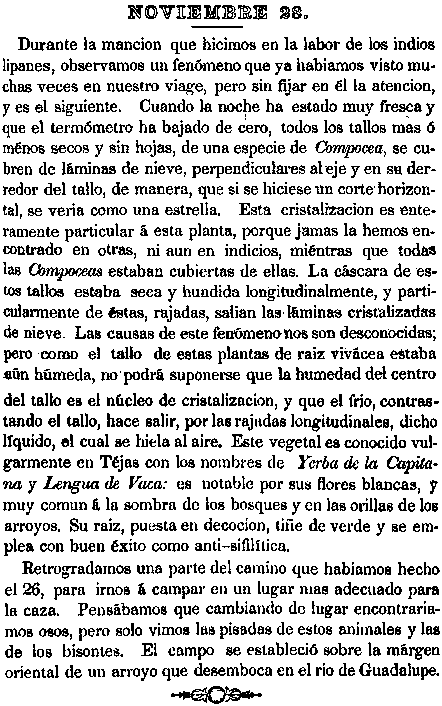
During the [period?] we spent at the camp of the Lipan indians, we observed a phenomenon that we had already seen many times during our travels, but without paying attention to it, and is as follows. When the night has been very cool and the thermometer has dropped below zero, all the more or less dried and leafless stems of a composite species [BH: Asteraceae] were covered with layers of frost, perpendicular to the axis and surrounding the stem in such a way that a horizontal cut resembled a star. These crystallisations are entirely unique to this plant, because they have never been found with any others, even those present at the time, while all these composites were covered with them. The epidermis of these stems was dry and collapsing longitudinally, and particularly from these fissures the layers of ice crystals emerge. The causes of this phenomenon are unknown, but since the stem of these plants with living roots still contained moisture, may it not be assumed that the moisture at the center of the stem is the basis for the crystallisation, and that the cold, set in opposition to the stem, forces the water out, via the longitudinal fissures, and causes it to freeze as it emerges into the air. This plant is known in Texas by the names 'capitana' and 'cow tongue.' It is distinguished by its white flowers, and is very common in forrest shade and on the banks of streams. A decoction from its root gives a green dye and is used with success as an anti-syphilitic.
We returned a part of the way that that we had made on the 26th, to set up camp in a place more suitable for hunting. We thought that by moving to a new spot we would encounter bears, but only saw their footprints and those of the bison. We set up camp on the east side of a stream that flows into Guadalupe River.